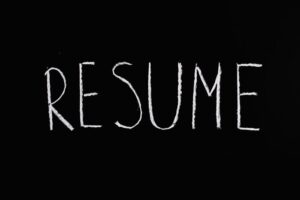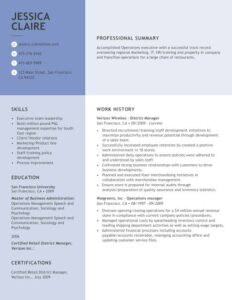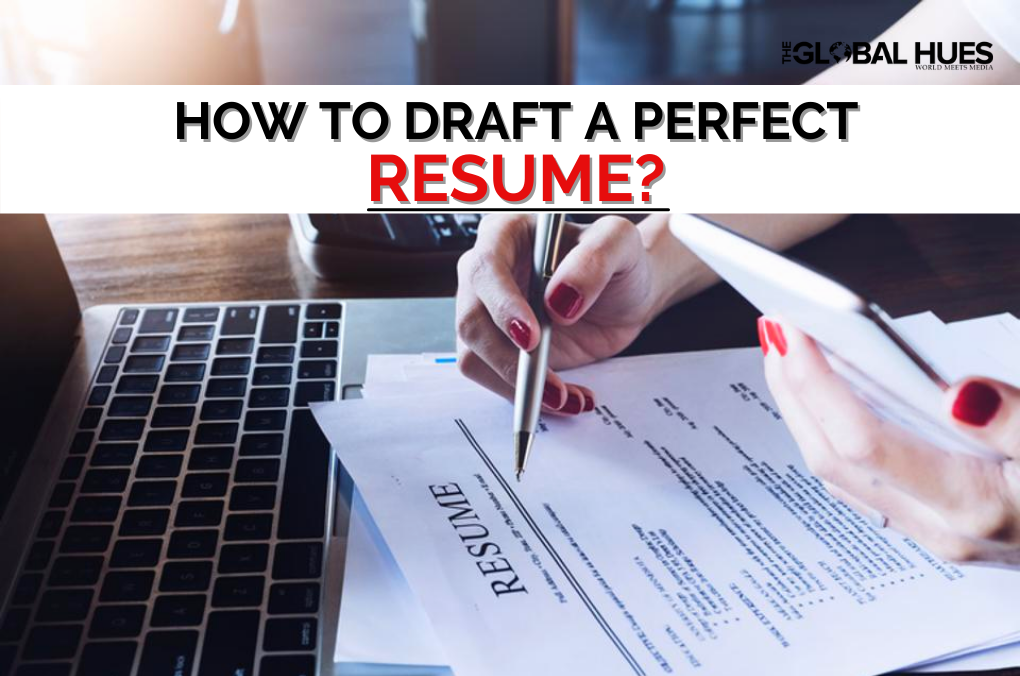Did you know, an average resume takes 6 seconds to be selected or rejected by the employer?
But the question remains, what is a resume? Without answering this basic question, it is impossible to frame a perfect one.
What is a Resume?
A resume is nothing but your life’s summary reduced in Important key points. A resume is supposed to be of just one page, only extended to two pages in special cases. It holds all your skills, job, education, and other necessary information. If you are already in the job market, it will contain your previous job information as well. The whole point of forming a resume is to make it easier for the employer to understand your qualifications to hire you.

Why is the resume important?
Even after reading ‘what is a resume?’ if you are still confused about why it is necessary, here are few points to explain:
- A resume creates your image in the occupational world.
- It is the only way of expressing your qualifications to your employer in a job setting.
- It explains to the employer,’ why should he hire you?’
- A resume first goes through artificial systems, if it’s not perfect and up to the mark, it will get lost in the crowd.
- A crisp resume is always more attention-grabbing.
- Skills have become necessary now and how you present them even more important.
Why can’t a person use a LinkedIn profile instead of a resume?
Are you on the business social networking site? LinkedIn is famous among job seekers and job providers. This is why the outlook of LinkedIn is just like a resume. Some companies might take it as an acceptable submission of your resume. However, a proper resume particular to the job profile and Company must always be curated by the candidate. LinkedIn can provide only a wider view of your experience. A resume speaks in a specifically designed language.
What Are Employers Looking for in a Resume?
Isn’t this a million-dollar question? If the employee understands what the employer wants, half of their tension would evaporate. We are here to make this understanding easier for you.
Hiring managers seek three valid points in a resume. They are:
- What did you do?
- Why did you do it?
- What was the result?
If a person manages to answer these three questions concerning the job profile he/she is applying for along with the companies requirements, they will surely get in
About the language of the resume
Many people face difficulties in creating their resumes. There is a notion among people that using technical jargon and difficult words will make them look more knowledgeable and desirable. In contrast to this assumption, which is completely false, the truth is a resume should be readable and easily understandable. It should Directly connect to an employer. They just want to see the required talents in a candidate to fulfill the job.
How to Write a Resume?
Following some simple steps can help you create an awesome resume. It’s a beautiful process.
The steps to follow are:

1. Pick a format:
The resume needs to be properly planned and organized. You can’t start writing one before knowing how it should turn out. It is suggested to form a resume in reverse chronological order. It is safe to start writing a resume from easy formats and slowly transition into complicated ones.
The following sections must be included in a resume:
- Work experience
- Non-work experience, including professional organizations, community involvement, or side projects
- Education and certifications
- Skills (specifically hard skills) and interests.
2. Basic information should be at the top:
All the information that can be used to contact you must be mentioned at the top of the page. This includes:
- Full name
- Phone number
- Personal email address
- You might also choose to include other basic information, such as your LinkedIn or personal website URL, your social media profiles (if relevant to the job), or your address.
- Mention “open to relocating” if you are willing to relocate.
3. Work Experience:
When you form a work resume, this section is supposed to fill up most of the space. Even in the case of switching careers, you have to mention every place and every field in which you worked. This gives a view of your background and expertise to the employer.
For a clearer understanding, you can also make sections such as “Relevant Experience” and “Additional Experience” in this category. Keep in mind to keep recent experience always on the top of your resume. Always try to mention the job title and the previous company you worked for in your work experience. People who stayed associated with one Company for a longer period might mention the responsibilities they handled.
Example of writing a work experience:
Associate writer, The media. co
September 2017 – Present
Managing the workflow, creating data, and proofreading it.
4. Add extra experience and volunteer work:
There are so many activities, extra talents, tasks, and special projects individuals take part in but have no clue how to add this in their resume. It’s simple, just create a “Voluntary experience” category and jot down the points. For recently graduated students, a well-rounded category of on-campus activities can be created.
5. Education is a must:
In the hustle of filling the work experience, don’t forget about your education. For people who recently completed their graduation, education should always be at the top of their resume, along with an exact GPA, year of passing out, and school/University name. Sometimes a unique diploma or certificate may make you stand out from the crowd.

6. Skills and interests:
Many bad raps are associated with this section, however, if you utilize it in an educated way, this might turn out to be a game-changer. It’s always great to add quick skills to the resume, especially when you are changing your field a skill-based resume will be your best bet. ATS (applicant tracking system) is utilized mostly everywhere now to sort out resumes. If your skills contain a keyword it might be favorable for you.
Certain fields require skill sets more than others such as the scientific community, writing community, artistic community, and many more.
7. Resume Summary Statement:
This is a completely optional thing to include in your resume. Not many people are fans of it but you can add a small statement concluding everything mentioned in your resume.
8. Tailor your resume according to the job:
Every job demands something different from a candidate, you can’t just take one resume and apply it in every industry or field. It is extremely important to tailor your resume as per the job requirements. This also works great with the ATS system.
It is recommended to add keywords from the job description into your resume, preferably somewhere in the top section.
9. Always spend time refining:
The common mistake a lot of people make is spelling mistakes and grammatical errors in a resume. Even one misspelling can let your resume Directly to the trash. It is very important to proofread the resume before sending it forward. Refining doesn’t happen just once, it has to be performed again and again, as with every year new experiences will keep on adding.
10. Give importance to the presentation:
Even after carefully following every step mentioned above, sometimes a resume may lack behind in terms of presentation. It is always preferred to send your resume in Pdf format.
The page should look neat, with the same font, clear heading, and easily readable font size.
A resume template provided by ‘My perfect resume’

Conclusion
Undeniably, a resume is a life-saver and a job-getter. What you can’t do, a resume can. It is your first impression of any Company. Take time to make it worthwhile.
Also Read:
- List Of 10 Best Online Courses To Boost Resume
- Mastering Time Management: How To Manage Time
- Top 7 Reasons To Study Postgraduate Courses In London
- How To Become A Judge In India? Here’s A Guide For You
- The MBA Odyssey: Exploring Top 10 MBA Colleges In India
- Reasons To Enrol Your Child In An International School
- How To Cope-Up With Exam Stress?
- 10 Best Freelance Skills To Learn
- Top 10 In-Demand Skills
- The Indian Edtech Industry: Trends To Watch In Future
- 10 Most Promising E-Learning Companies In India
- 5 Inspiring Books For Women Entrepreneurs
- 5 Tips To Choose The Best Coaching For NEET




